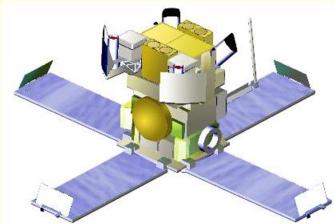The HETE-2 Satellite HETE-2, also known as the High Energy Transient Explorer was an international collaboration between USA, Japan, France, and Italy, headed by the Center for Space Research at MIT. It was successully launched with a Pegasus launcher, on October 9 2000 from the Kwajalein missile range facility, an atoll in the Pacific ocean. HETE-2 was designed to detect and localize gamma-ray bursts (GRBs). The suite of instruments onboard allowed simultaneous observations of GRBs to be made in soft and medium X-ray and gamma-ray energies. HETE-2 computed the location of the GRB and transmitted the coordinates as soon as they were calculated. These coordinates were quickly distributed to ground-based observers to allow detailed studies of the initial phases of GRBs. HETE-2 also performed a survey of the X-ray sky. Mission CharacteristicsAll instruments pointed in the anti-solar direction and shared a common field of view of ~1.5 steradians.
Page authors: Lorella Angelini Jesse Allen HEASARC Home | Observatories | Archive | Calibration | Software | Tools | Students/Teachers/Public Last modified: Thursday, 24-Sep-2020 20:09:14 EDT |

